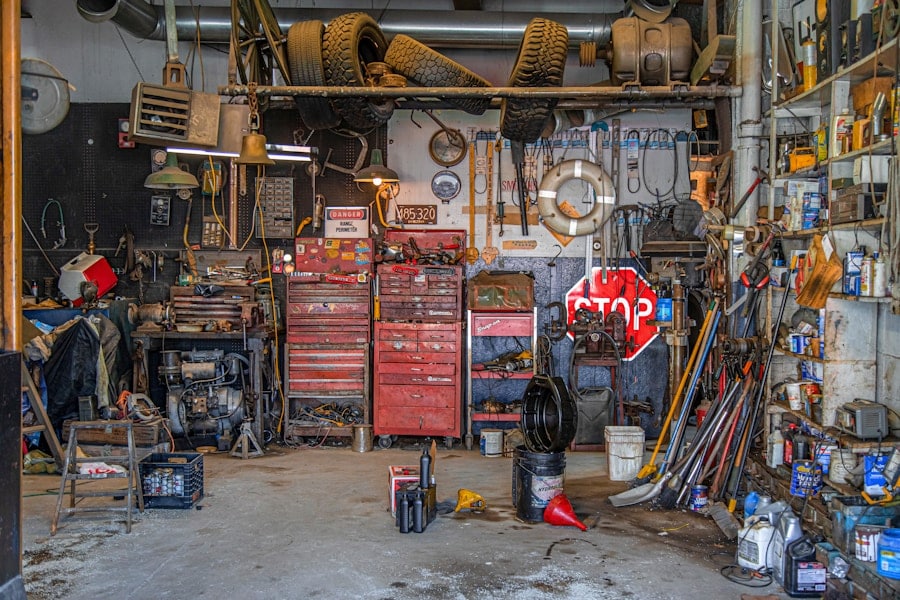In recent years, the auto repair industry has undergone a significant transformation, largely driven by advancements in technology. As we navigate through this era of rapid change, we find ourselves witnessing a shift from traditional methods to more sophisticated, tech-driven approaches. This evolution is not merely a trend; it represents a fundamental change in how we diagnose, repair, and maintain vehicles.
The integration of technology into auto repair services has not only improved efficiency but has also enhanced the overall customer experience. As we delve deeper into this topic, we recognize that technology in auto repair encompasses a wide range of tools and systems. From diagnostic equipment that can pinpoint issues with precision to software that streamlines communication between technicians and customers, the impact of technology is profound.
We are now at a point where the marriage of automotive expertise and technological innovation is reshaping the landscape of auto repair services, making it essential for both technicians and customers to adapt to these changes.
Key Takeaways
- Technology has revolutionized the auto repair industry, making processes more efficient and improving customer experience.
- Diagnostic tools and equipment have become more advanced, allowing technicians to quickly and accurately identify vehicle issues.
- Digital communication and customer service tools have streamlined the interaction between auto repair shops and their clients.
- Online appointment scheduling and service tracking systems have made it easier for customers to book and monitor their vehicle repairs.
- Integration of software and data management has improved the overall efficiency and organization of auto repair shops.
Diagnostic Tools and Equipment
One of the most significant advancements in auto repair technology is the development of sophisticated diagnostic tools and equipment. Gone are the days when mechanics relied solely on their intuition and experience to identify problems. Today, we have access to advanced diagnostic scanners that can interface with a vehicle’s onboard computer systems.
These tools allow us to retrieve error codes, monitor real-time data, and perform comprehensive system checks with remarkable accuracy. The precision offered by modern diagnostic tools not only saves time but also reduces the likelihood of misdiagnosis. As we utilize these devices, we can quickly identify issues ranging from engine malfunctions to electrical system failures.
This efficiency translates into faster turnaround times for repairs, which ultimately benefits our customers. Moreover, the ability to provide detailed reports on vehicle health enhances transparency and builds trust between us and our clients.
Digital Communication and Customer Service

In an age where communication is instantaneous, the auto repair industry has embraced digital platforms to enhance customer service. We have witnessed a shift from face-to-face interactions to digital communication channels that allow us to connect with customers more effectively. Whether through email, text messaging, or social media, we can now provide updates on repairs, answer questions, and address concerns in real time.
This digital approach not only streamlines communication but also fosters a sense of engagement with our customers. We can send reminders for scheduled maintenance, share educational content about vehicle care, and even solicit feedback on our services. By leveraging technology in our communication strategies, we create a more personalized experience for our clients, making them feel valued and informed throughout the repair process.
Online Appointment Scheduling and Service Tracking
The convenience of online appointment scheduling has revolutionized how we manage our service operations. Customers can now book appointments at their convenience, eliminating the need for phone calls or in-person visits. This flexibility allows us to optimize our schedules and allocate resources more efficiently.
As we embrace this technology, we also enhance the overall customer experience by providing a hassle-free way for clients to secure their service appointments. Furthermore, service tracking systems have become an integral part of our operations. Customers can monitor the progress of their vehicle repairs in real time, receiving updates on each stage of the process.
This transparency not only keeps clients informed but also reduces anxiety associated with leaving their vehicles in our care. By integrating online scheduling and service tracking into our workflow, we create a seamless experience that aligns with the expectations of today’s tech-savvy consumers.
Integration of Software and Data Management
As we continue to explore the role of technology in auto repair services, we cannot overlook the importance of software integration and data management. Modern auto repair shops utilize specialized software that consolidates various aspects of operations, from inventory management to customer relationship management (CRM). This integration allows us to streamline processes and access critical information at our fingertips.
Data management plays a crucial role in enhancing our decision-making capabilities. By analyzing historical data on repairs, customer preferences, and inventory levels, we can make informed choices that improve efficiency and profitability. Additionally, this data-driven approach enables us to identify trends and anticipate customer needs, allowing us to tailor our services accordingly.
As we harness the power of software integration and data management, we position ourselves for success in an increasingly competitive market.
Automation and Robotics in Repairs

The advent of automation and robotics has introduced a new dimension to auto repair services. While some may view this as a threat to traditional jobs, we see it as an opportunity to enhance our capabilities and improve service quality. Automated systems can perform repetitive tasks with precision, freeing up our skilled technicians to focus on more complex repairs that require human expertise.
Robotic technologies are being integrated into various aspects of auto repair, from automated tire changers to robotic welding systems. These innovations not only increase efficiency but also reduce the risk of human error. As we embrace automation, we can achieve higher levels of consistency in our work while also improving safety in the shop environment.
The collaboration between human technicians and robotic systems represents a promising future for the auto repair industry.
Training and Education in Technology for Auto Technicians
As technology continues to evolve, so too must our skills as auto technicians. The integration of advanced tools and systems necessitates ongoing training and education to ensure that we remain proficient in our craft. Many repair shops are investing in training programs that focus on the latest technologies, equipping us with the knowledge needed to navigate complex diagnostic tools and software.
Moreover, industry partnerships with educational institutions are becoming increasingly common. These collaborations provide us with access to cutting-edge training resources and hands-on experience with new technologies. By prioritizing education in technology, we not only enhance our individual skill sets but also contribute to the overall advancement of the industry.
As we embrace lifelong learning, we position ourselves as leaders in a rapidly changing landscape.
Future Trends and Innovations in Auto Repair Technology
Looking ahead, we can anticipate even more exciting trends and innovations in auto repair technology. The rise of electric vehicles (EVs) presents unique challenges and opportunities for our industry. As EV adoption increases, we will need to adapt our skills and knowledge to service these vehicles effectively.
This shift will likely lead to new training programs focused on EV technology and maintenance. Additionally, advancements in artificial intelligence (AI) are poised to revolutionize diagnostics further. AI-powered systems can analyze vast amounts of data from various sources, enabling us to make more accurate predictions about vehicle performance and potential issues.
As these technologies continue to develop, we will find ourselves at the forefront of an industry that is constantly evolving. In conclusion, the integration of technology into auto repair services has transformed how we operate and interact with customers. From advanced diagnostic tools to digital communication platforms, technology has enhanced efficiency and improved customer satisfaction.
As we embrace these changes and invest in ongoing education, we position ourselves for success in an ever-evolving landscape. The future holds exciting possibilities for innovation in auto repair technology, and together, we will navigate this journey toward excellence in service delivery.
Technology plays a crucial role in modern auto repair services, as highlighted in a recent article on unveiling the secrets of body fillers. This article delves into the various types, applications, and techniques of body fillers used in auto body repair, showcasing how technology has revolutionized the industry. By understanding the latest advancements in body fillers, auto repair shops can provide more efficient and effective services to their customers.
FAQs
What are the benefits of technology in modern auto repair services?
Technology in modern auto repair services allows for more accurate diagnostics, efficient repairs, and improved communication with customers. It also enables the use of advanced tools and equipment for better results.
How does technology improve the customer experience in auto repair services?
Technology allows for easier appointment scheduling, digital communication with customers, and the ability to provide updates on the status of their vehicle repairs. This improves transparency and customer satisfaction.
What role does computerized systems play in modern auto repair services?
Computerized systems are used for vehicle diagnostics, maintenance reminders, inventory management, and customer relationship management. They help streamline operations and improve efficiency in auto repair shops.
How has the use of technology changed the way auto repair services are conducted?
Technology has led to the use of advanced diagnostic tools, electronic vehicle systems, and digital communication platforms. This has improved the speed and accuracy of repairs, as well as the overall customer experience.
What are some examples of technology used in modern auto repair services?
Examples of technology used in modern auto repair services include diagnostic scanners, computerized vehicle systems, digital inspection tools, electronic repair manuals, and customer management software.






